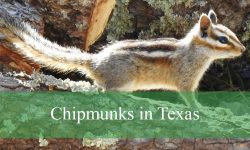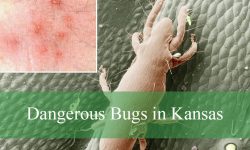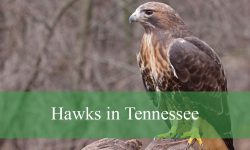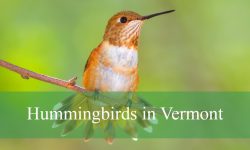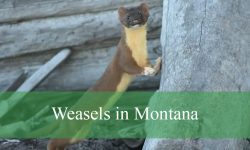New York State hosts nearly 120 butterfly species, making it a vibrant and exciting place for butterfly enthusiasts and nature lovers alike. From the striking Red Admiral to the elusive Eastern Comma, as well as the graceful Silver-spotted Skipper and the majestic Mourning Cloak, the diversity of butterflies in New York State is truly remarkable. These colorful insects can be found fluttering through a variety of habitats, from urban parks to dense forests, offering endless opportunities for observation and photography.
Exploring the many natural areas across the state, such as Van Cortlandt Park in the Bronx or the expansive Adirondack Mountains, provides some of the best chances to see a wide range of butterflies in New York State. Each season brings its own unique species, with spring and summer showcasing the most vivid and active populations. For experienced lepidopterists and casual observers alike, New York’s butterfly populations offer something special for everyone.
This guide introduces 27 of the most fascinating and commonly encountered butterfly species in New York State, complete with pictures and identification tips. By learning to recognize these beautiful creatures, you can deepen your appreciation of the state’s rich biodiversity and enjoy memorable experiences in its diverse landscapes.
Common Butterflies Found in New York State
Monarch (Danaus plexippus)
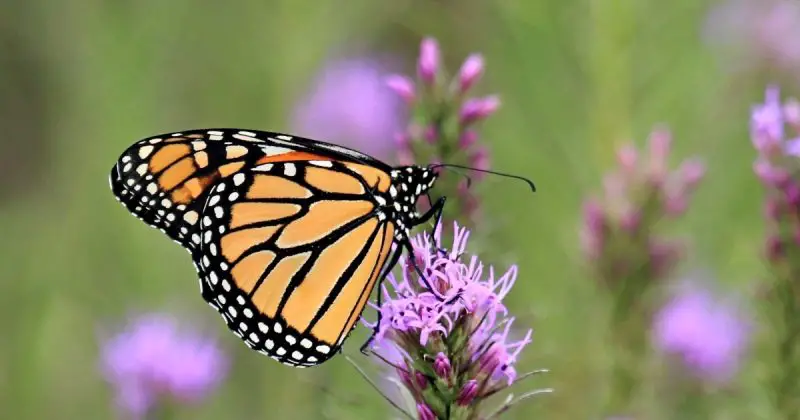
The Monarch butterfly is one of the most iconic and easily recognized butterflies in North America, known for its vibrant orange wings with black veins and white-spotted black borders. Adult Monarchs typically have a wingspan ranging from 3.5 to 4 inches. Males can be identified by the presence of two small black scent glands on their hindwings, while females generally have thicker black veins. The bright coloration serves as a warning to predators, signaling that the Monarch is toxic due to its diet of milkweed during its larval stage.
Monarchs exhibit fascinating migratory behavior, undertaking one of the longest migrations of any insect species. Every fall, Monarchs from New York and other northeastern states travel up to 3,000 miles to overwinter in the oyamel fir forests of central Mexico. In spring, they begin their return journey northward over multiple generations. Throughout their life cycle, Monarchs rely heavily on milkweed plants—not only as the sole host for their caterpillars but also as a nectar source for adults. They also feed on nectar from goldenrod, thistle, and aster.
In New York State, Monarchs are typically observed from late May through September in open fields, meadows, roadsides, and gardens where milkweed grows abundantly. They are especially common in suburban and rural areas where natural milkweed patches remain undisturbed. Conservation efforts in New York focus on planting native milkweed and protecting open habitats to support breeding and migratory stopovers. Monarch populations fluctuate from year to year, often influenced by weather conditions and habitat availability along their migratory route.
Eastern Tailed-Blue (Cupido comyntas)

The Eastern Tailed-Blue is a small and delicate butterfly that measures about 1 inch across when its wings are open. The upper side of the wings in males is a bright silvery blue with narrow black margins, while females tend to be duller, often appearing brownish with hints of blue near the body. A defining characteristic of this species is the small, threadlike tails extending from the hindwings and the two black spots bordered in orange near the tail base—features that help deter predators by mimicking antennae.
Eastern Tailed-Blues are known for their erratic and low-to-the-ground flight patterns, often flitting through grasses and weedy areas. They are typically active from spring to early fall and are among the earliest and latest butterflies to be seen in a season. Males are territorial and can often be seen perching on vegetation to watch for females. The caterpillars feed on legumes such as clover, alfalfa, and vetch, while adults primarily nectar from low-growing flowers including white clover, buttercup, and wild strawberry.
In New York, the Eastern Tailed-Blue can be found statewide, including urban parks, meadows, fields, roadsides, and lawns where clover and other host plants are present. They thrive in disturbed or open habitats, making them one of the most adaptable and widespread butterfly species in the state. Despite their small size, they are often abundant in late spring and summer, especially after rains that stimulate host plant growth. Because of their resilience, they are a common sight even in heavily populated regions.
Painted Lady (Vanessa cardui)

The Painted Lady is a medium-sized butterfly with a wingspan of about 2 to 2.5 inches and is easily identified by its orange-brown wings, black tips with white spots, and mottled underside that helps it blend into its surroundings. Unlike many butterflies, the Painted Lady has a distinctive four-eye-spot pattern on the underside of its hindwings, which becomes visible when its wings are closed. The species is often mistaken for the American Lady but can be distinguished by its smaller size and more intricate ventral pattern.
Painted Ladies are remarkable for their long-distance migration and strong flight capabilities. Although their migratory behavior is not as predictable as the Monarch’s, they move northward from the southern United States and Mexico each spring in waves, reaching New York by late April or May. These butterflies breed along their journey, and their larvae feed on a variety of plants, including thistles, mallows, and hollyhocks. Adults are generalist nectar feeders, often seen visiting coneflowers, aster, zinnias, and butterfly bushes.
In New York, Painted Ladies are typically seen in late spring through fall, especially during years of large irruptions when migration surges occur. They are found in a wide range of habitats, including meadows, roadsides, gardens, and agricultural fields. Their wide host plant range allows them to thrive in both rural and suburban settings. Some years see explosive population booms, and during such times, they may be observed in large numbers clustered around nectar-rich areas or flying en masse across open landscapes.
Red Admiral (Vanessa atalanta)

The Red Admiral is a striking butterfly with a black base color, bright red-orange bands across its forewings, and white spots near the tips. Its hindwings also feature red-orange marginal bands, and the ventral side is mottled brown and gray, offering effective camouflage. Red Admirals have a wingspan of about 2 to 2.5 inches and exhibit a rapid, darting flight style. This species is known for its inquisitive nature and may land on people, especially those wearing dark or bright colors.
This butterfly is highly migratory and somewhat nomadic in behavior. Red Admirals migrate north from southern regions in the spring and breed during the summer in northern areas like New York. They do not survive cold winters and rely on successive generations to maintain populations. Their caterpillars feed on plants in the nettle family, particularly stinging nettle. Adult Red Admirals are known to feed not only on flower nectar, including from milkweed and asters, but also on tree sap, fermenting fruit, and even dung.
In New York State, Red Admirals are widespread and can be found in woodlands, parks, fields, and gardens from April through October. They often bask in the sun on open trails or tree trunks and are especially active during warm afternoons. Their adaptable diet and tolerance for various habitats make them a common sight across the state, especially during peak migration years. Red Admirals are also frequently seen in urban settings, which reflects their versatile survival strategies.
Black Swallowtail (Papilio polyxenes)

The Black Swallowtail is a large and visually stunning butterfly with a wingspan of 3 to 4 inches. Males are predominantly black with two rows of yellow spots forming bands across the wings, while females may show blue scaling on the hindwings. Both sexes have a pair of red-orange eye spots on the lower part of the hindwings. Their long, tapering tails resemble those of a swallow’s, giving the butterfly its common name and helping with predator evasion.
Black Swallowtails are known for their elegant flight and are often seen fluttering over open areas. Their life cycle is closely tied to plants in the carrot family, such as dill, parsley, fennel, and Queen Anne’s lace, which serve as host plants for their green, striped caterpillars. Adult butterflies feed on nectar from thistles, milkweed, zinnias, and clover. Females typically lay single eggs on the host plant’s leaves, and the caterpillars go through several distinct molts, becoming more colorful as they grow.
In New York, the Black Swallowtail is common in suburban gardens, meadows, fields, and roadsides, particularly where host plants grow. They are active from late spring to early fall and can have two to three broods per season, depending on the weather. These butterflies are often encouraged in home gardens due to their attractiveness and pollination role. Their wide distribution throughout the state, combined with their preference for cultivated herbs, makes them a favorite among gardeners and butterfly watchers alike.
Eastern Tiger Swallowtail (Papilio glaucus)

The Eastern Tiger Swallowtail is one of the most eye-catching and easily recognizable butterflies in the eastern United States, including New York. Adults are large, with a wingspan ranging from 3.5 to 5.5 inches. Males have bright yellow wings with four distinct black tiger-like stripes running vertically on each forewing, while females may appear similar or in a striking black form, especially in the southern part of their range. Both sexes have blue scaling on the hindwings and orange and blue spots near the tail ends, adding to their visual appeal.
These butterflies are strong, graceful fliers and are often seen gliding through wooded areas, along roadsides, or near flowering gardens. Males are known for a behavior called “puddling,” where they gather on damp ground to drink minerals from mud or sand. Females lay their eggs on the leaves of a variety of host trees, including tulip tree, wild cherry, ash, and sweet bay magnolia. The caterpillars are green with large, false eye spots and a yellow band, mimicking snakes to deter predators.
In New York, Eastern Tiger Swallowtails are widely distributed and typically appear from May through August, with two broods per year in warmer parts of the state. They are most commonly found in deciduous forests, forest edges, riverbanks, and suburban gardens. Because of their large size and bright coloration, they are popular among butterfly watchers and are often featured in educational materials and wildlife gardens throughout the state.
Spicebush Swallowtail (Papilio troilus)
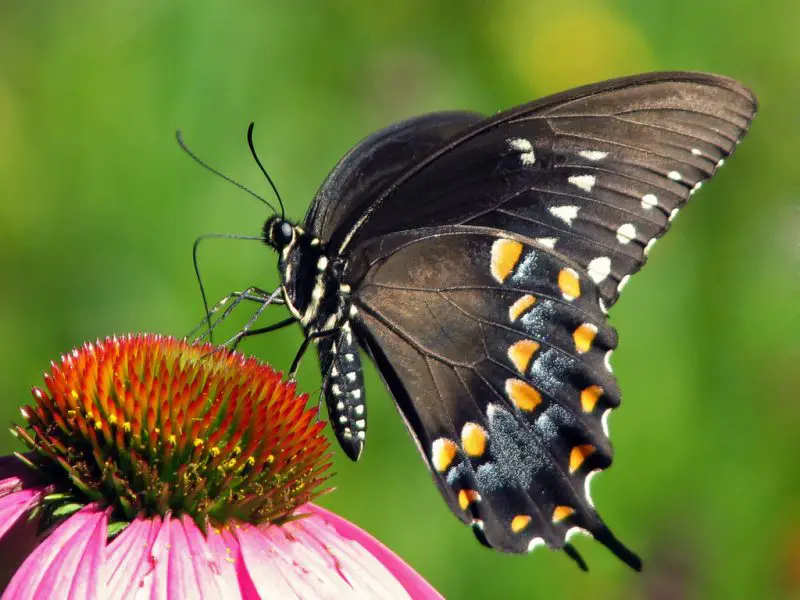
The Spicebush Swallowtail is a dark and elegant butterfly with a wingspan of about 3 to 4 inches. Adults are predominantly black with a subtle iridescent blue or green sheen on the hindwings, especially in females. One of the most distinguishing features is the presence of two rows of pale green or blue spots along the wing margins and a single line of orange spots on the underside. Their tail-like extensions on the hindwings are characteristic of swallowtail species.
This butterfly is named after its primary larval host plant, the spicebush (Lindera benzoin), though it also uses sassafras and other members of the laurel family. The caterpillars are particularly remarkable, with green bodies and large, false eyespots on the thorax to mimic a snake’s head. Adults feed on nectar from various flowers, including jewelweed, honeysuckle, thistle, and milkweed. They are often seen flying low through shaded woods or near forest edges, darting quickly between host plants and nectar sources.
In New York, the Spicebush Swallowtail is commonly found in wooded habitats, especially in moist, deciduous forests where spicebush naturally grows. They are present from late spring through early fall, with one to two generations depending on climate conditions. Because they are more shade-loving than other swallowtails, they are often spotted in forest understories or near shaded garden edges rather than in wide-open meadows. Their mimicry, behavior, and specific host plant needs make them fascinating subjects for naturalists and butterfly gardeners.
Cabbage White (Pieris rapae)
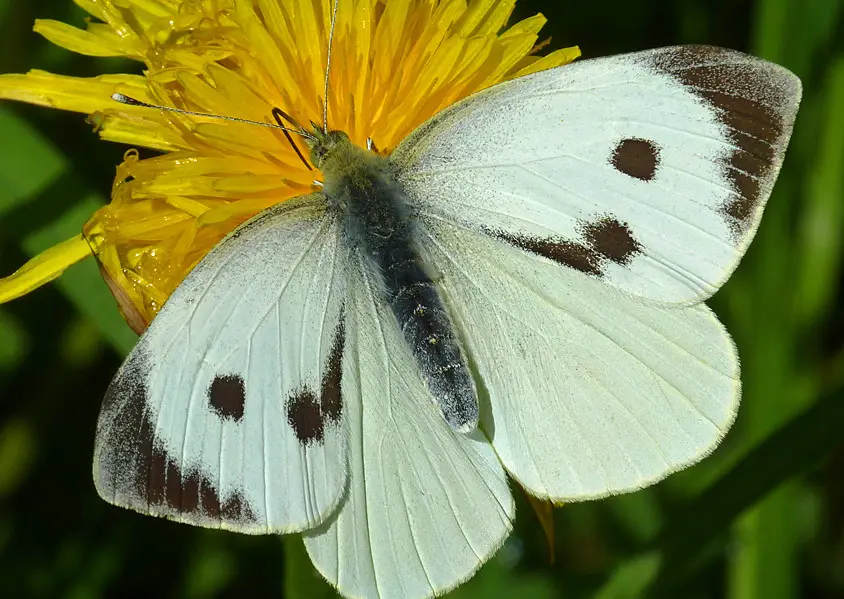
The Cabbage White is one of the most common and widespread butterflies in New York and much of the world. This small butterfly has a wingspan of about 1.5 to 2 inches and is primarily white with a slight yellowish underside. The tips of the forewings have black markings, and males have one black spot on each wing, while females have two. Though not as flashy as other species, their fluttering flight and persistent presence make them highly noticeable.
Introduced from Europe in the 1800s, the Cabbage White has become firmly established in North America and is considered a pest in agricultural areas. Its caterpillars feed on plants in the Brassicaceae family, especially cabbage, broccoli, kale, and mustard. Adults feed on nectar from a wide variety of flowers including dandelions, clovers, asters, and many garden blooms. They are often seen flying during sunny days from early spring to late fall, even in urban and suburban areas.
In New York, the Cabbage White can be found virtually everywhere—gardens, parks, fields, vacant lots, and even city sidewalks. Their adaptability and fast reproductive cycle allow them to produce multiple generations throughout the season. While gardeners may view them as nuisances due to their caterpillar damage, they are also a good species for beginners to observe and learn butterfly identification. Their presence year-round makes them one of the most familiar butterflies to residents of New York State.
Clouded Sulphur (Colias philodice)

The Clouded Sulphur is a medium-sized butterfly with a wingspan of 1.5 to 2.5 inches and is best known for its bright lemon-yellow wings edged with dark brown or black. Males are generally cleaner in coloration, while females may show a broader dark border with small light spots inside. The underside of the wings is pale yellow with small silver or white spots, helping camouflage the butterfly when it is at rest in fields or grasses.
Clouded Sulphurs are strong, active fliers and are typically found fluttering just above the ground in open areas such as meadows, fields, pastures, and roadsides. They feed on nectar from clover, aster, milkweed, and dandelion, and their caterpillars feed primarily on legumes, especially alfalfa, white clover, and vetch. Males often engage in aerial chases when seeking mates, and both sexes are known to bask in the sun with wings closed.
In New York, Clouded Sulphurs are widespread and can be seen from early spring through the first frost, with multiple generations produced during the warmer months. They are most common in rural and agricultural areas but also thrive in urban lawns and parks with plenty of clover. Due to their abundance, they often form loose colonies and are frequently seen in mixed groups with Orange Sulphurs, making identification a fun challenge for butterfly enthusiasts and beginners alike.
Orange Sulphur (Alfalfa Butterfly) (Colias eurytheme)
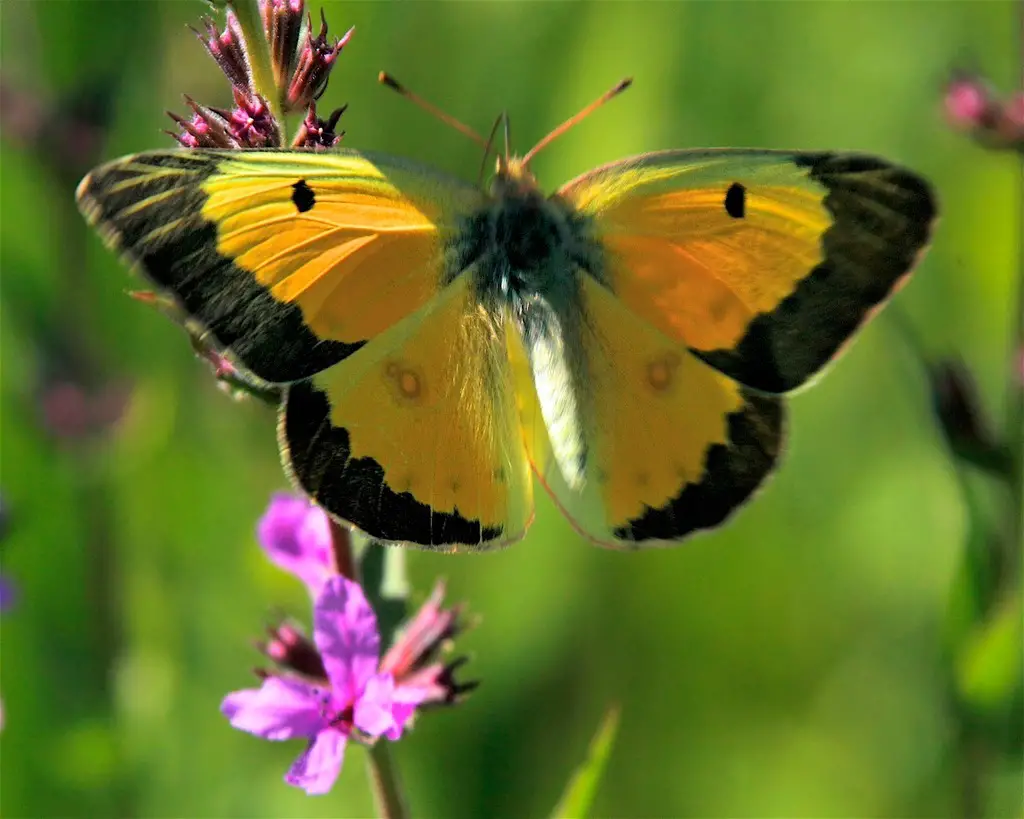
The Orange Sulphur is closely related to the Clouded Sulphur but is distinguished by its brighter orange coloration on the upper side of the wings, bordered with dark brown or black. Its wingspan ranges from 1.5 to 2.5 inches, and females may appear paler or even creamy white in some forms. The undersides are yellow or orange with faint spotting and a silvery central mark on the hindwings, which helps differentiate them from their close relatives.
This butterfly is an energetic and common sight in open spaces, often feeding on the same flowers as the Clouded Sulphur—such as clover, milkweed, and goldenrod. The larvae primarily feed on legumes, especially alfalfa and white clover, which is why the species is also called the Alfalfa Butterfly. Males are territorial and can often be seen patrolling over open areas in search of females, occasionally engaging in mid-air duels with other males.
In New York, the Orange Sulphur is widely distributed and active from late spring through autumn. It is most frequently seen in agricultural fields, hay meadows, roadsides, and disturbed grasslands where host plants grow. It often coexists with the Clouded Sulphur, and hybrid forms can sometimes occur where their ranges overlap. The Orange Sulphur’s bold coloration and frequent activity make it one of the more noticeable and engaging butterflies across the New York landscape.
American Lady (Vanessa virginiensis)

The American Lady is a beautiful medium-sized butterfly with a wingspan of approximately 1.75 to 2.5 inches. The upper side of the wings is a vibrant orange with black borders and white spots on the forewings. What sets the American Lady apart from the closely related Painted Lady is the presence of two large, bold eye spots on the underside of the hindwings, compared to four smaller ones in its cousin. The underside of its wings also features intricate brown and gray patterns that resemble dead leaves, providing excellent camouflage.
American Ladies are swift fliers and are often seen basking in the sun with their wings spread open or nectaring at flowers in meadows and gardens. They are migratory, flying north each spring from the southern U.S. and breeding throughout summer. Their caterpillars feed on plants in the Aster family, especially everlasting, pearly everlasting, and cudweed. Adults are fond of nectar sources like zinnias, marigolds, and asters and can also be seen feeding on tree sap or decaying fruit.
In New York, the American Lady is usually observed from spring through fall, especially in sunny fields, gardens, roadsides, and open woodlands. They may appear in varying numbers depending on the success of their spring migration. Though not as numerous as the Painted Lady, they are still a familiar and cherished species among butterfly enthusiasts across the state. Their elegant appearance and graceful flight make them a favorite for photographers and gardeners alike.
Common Buckeye (Junonia coenia)
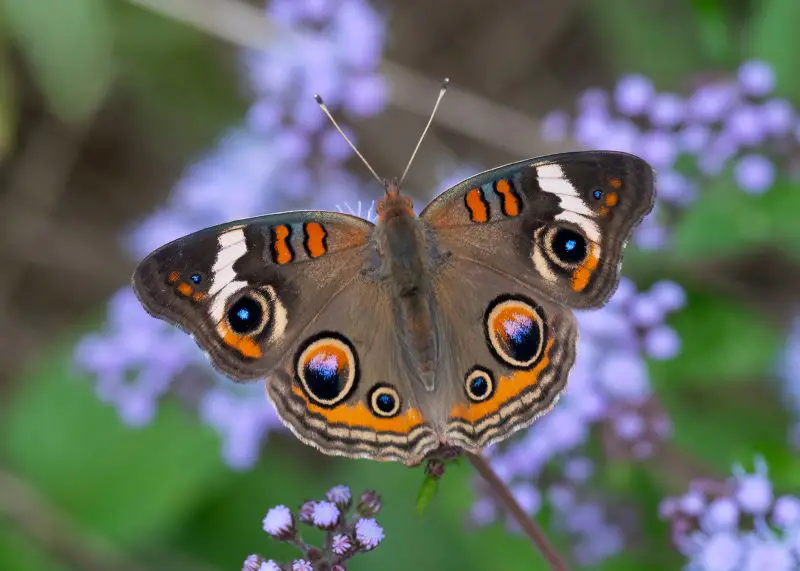
The Common Buckeye is a striking butterfly, instantly recognizable by its eye-catching wing pattern. It has a wingspan of about 1.5 to 2.75 inches and features two large eye spots on the forewings and two on the hindwings, set against a brown background with orange bars and white patches. These eye spots are thought to confuse or deter predators, giving the Buckeye a greater chance of escape.
This butterfly is highly active and prefers sunny, open areas like fields, pastures, gardens, and roadsides. It is a seasonal migrant in New York, typically arriving in late spring or early summer from southern regions. Buckeyes do not overwinter in cold climates and must recolonize each year. The caterpillars feed on plants such as snapdragon, plantain, toadflax, and ruellia, while adults enjoy nectar from composites like aster, knapweed, and zinnias. Males are territorial and can often be seen perching low to the ground, darting out to chase away intruders.
In New York, the Common Buckeye is seen mostly during summer and early fall. It is most common in the southern part of the state but may appear farther north in warmer years. While not as abundant as some other butterflies, it can be locally common and easily spotted due to its striking appearance and preference for open, sunny spaces. It is one of the most photographed butterflies thanks to its vibrant wing markings.
Viceroy (Limenitis archippus)
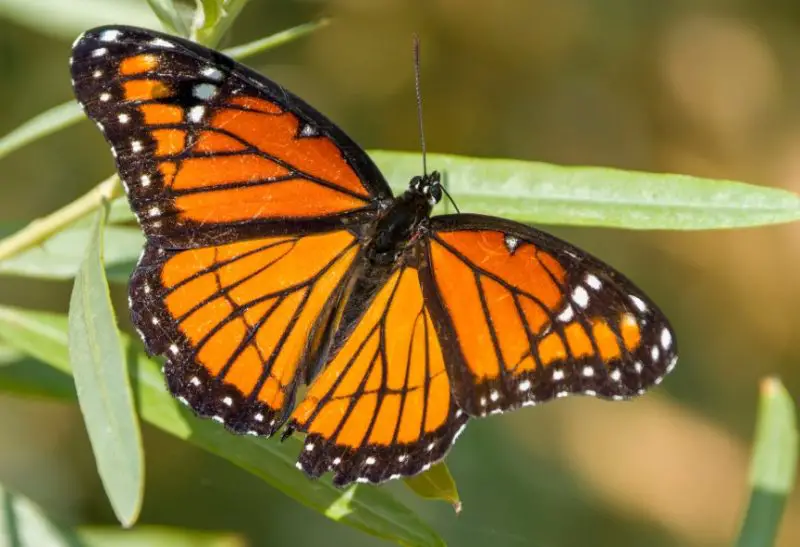
The Viceroy is a master of mimicry, closely resembling the Monarch butterfly but smaller in size, with a wingspan of about 2.5 to 3 inches. Its wings are orange with black veins and borders, just like the Monarch, but the Viceroy can be distinguished by a black horizontal line that crosses the hindwings. The undersides of the wings are paler, with a similar pattern that helps in identification when the butterfly is at rest.
This mimicry serves as a protective adaptation, as predators avoid the Viceroy believing it to be the toxic Monarch. Interestingly, the Viceroy itself is also unpalatable to many predators, enhancing the effectiveness of the resemblance. Viceroy caterpillars feed on trees in the willow family, such as willows and poplars. The caterpillars are camouflaged to look like bird droppings, which helps protect them from being eaten. Adult Viceroys feed on nectar as well as tree sap, rotting fruit, and even dung.
In New York, the Viceroy is found from late spring through fall, especially in wet areas like marshes, streamsides, and the edges of ponds where willow trees are abundant. They are most often seen flying slowly and gracefully just above vegetation or basking on leaves in sunny spots. Though less numerous than Monarchs, Viceroys are fairly common in suitable wetland habitats throughout the state and are admired for both their appearance and their fascinating mimicry.
Mourning Cloak (Nymphalis antiopa)

The Mourning Cloak is one of the longest-lived butterflies in New York and one of the first to be seen in spring. With a wingspan of 2.25 to 4 inches, this butterfly is easily recognized by its dark maroon-brown wings bordered by a creamy yellow edge and a row of iridescent blue spots. When resting with wings closed, it blends in well with tree bark and dead leaves, thanks to its cryptic brown underside.
Unlike many butterflies, Mourning Cloaks overwinter as adults in tree cavities, under bark, or in leaf litter. They often emerge on warm days in late winter or early spring and are active again in late summer and fall. They are not fond of flower nectar; instead, they prefer tree sap, especially from oak, and also feed on decaying fruit and animal scat. The caterpillars, which are spiny and black with red spots, feed on willow, elm, poplar, and hackberry trees.
In New York, Mourning Cloaks are found statewide and inhabit forests, woodland edges, parks, and even suburban yards. Their ability to overwinter as adults allows them to be seen before most other species in early spring. They are solitary and territorial, often seen flying slowly and erratically or basking in sunny clearings. Their rich coloration and seasonal behavior make them a favorite among early-season butterfly watchers.
Question Mark (Polygonia interrogationis)

The Question Mark is a unique butterfly with a jagged wing shape and a distinct silvery marking on the underside of its hindwings that resembles a question mark. Its wingspan ranges from 2.25 to 3 inches. The upper sides of the wings are orange with black spots and dark borders, while the undersides are mottled brown, helping it resemble a dead leaf when at rest. This camouflage is highly effective in protecting the butterfly from predators.
Question Marks are versatile in both diet and habitat. They lay eggs on elms, hackberry, nettles, and hops, and the caterpillars are black and spiny with subtle markings. Unlike most butterflies, adults feed more frequently on rotting fruit, tree sap, and animal droppings rather than flower nectar. Their behavior includes basking on sunlit tree trunks or stones and quickly darting into wooded areas when disturbed. Males are territorial and will aggressively patrol their perches.
In New York, Question Marks can be found from spring through fall, with two to three broods annually. They overwinter as adults and often reappear in early spring, especially during warm spells. Their habitats include woodlands, forest edges, gardens, and parks, particularly where host trees like elm or hackberry are present. Their unusual wing shape, cryptic coloring, and the small “question mark” symbol make them a fascinating and easily recognized species throughout the state.
Comma Butterfly (Eastern Comma) (Polygonia comma)
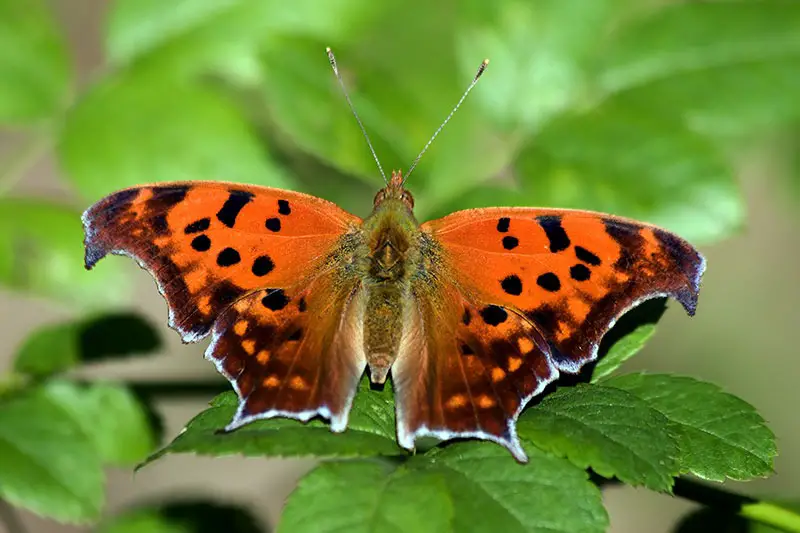
The Comma Butterfly is a medium-sized butterfly with a wingspan of approximately 1.75 to 2.5 inches. Its most distinctive feature is the ragged, scalloped edges of its wings, which give it a tattered appearance. The upper side of the wings is orange with black spots and markings, while the underside is mottled brown and gray, resembling dead leaves. A small, white, comma-shaped mark on the underside of the hindwings gives the species its common name and helps in identification.
This butterfly exhibits strong territorial behavior, with males often perching on sunlit branches and chasing away rivals. Adults prefer to feed on tree sap, rotting fruit, and nectar from flowers such as goldenrod and asters. The Comma overwinters as an adult, hibernating under loose bark or leaf litter, and emerges early in spring to mate. The caterpillars feed on plants like nettles, hops, and elm, and they construct leaf shelters by folding or tying leaves together.
In New York, the Comma Butterfly is commonly found in deciduous forests, woodland edges, and suburban gardens from spring through fall. Its cryptic coloration and overwintering habits allow it to survive cold winters and reappear early in the season, making it one of the first butterflies to be active each year. The Comma’s distinctive wing shape and marking make it a favorite among butterfly watchers in the region.
Silver-spotted Skipper (Epargyreus clarus)
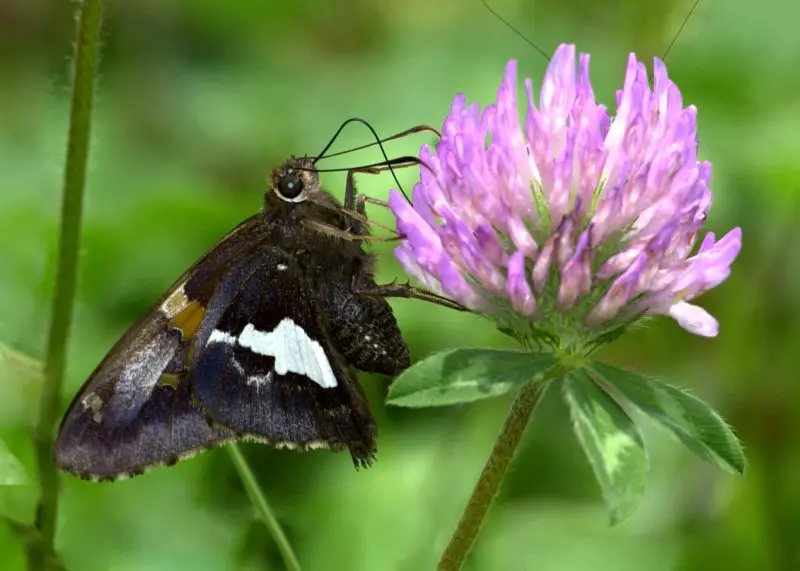
The Silver-spotted Skipper is a robust, fast-flying butterfly with a wingspan of about 1.75 to 2.5 inches. It is easily identified by its dark brown wings featuring a large, prominent silver-white spot on each hindwing. The forewings have orange patches and white spots that contrast with the overall dark background. Its chunky body and quick, erratic flight set it apart from many other skippers.
This species frequents sunny habitats such as open woodlands, forest edges, and gardens where its larval host plants grow. The caterpillars primarily feed on various species of legumes including locust trees, wisteria, and false indigo. Adult Silver-spotted Skippers nectar from flowers like milkweed, thistle, and dogbane. Males are known to perch on leaves or twigs, watching for passing females, and they often patrol territories during the warmest parts of the day.
In New York, the Silver-spotted Skipper is widespread and can be observed from late spring through early fall. It prefers areas with abundant flowering plants and leguminous trees for egg-laying. Their distinctive silver spots and swift flight make them a popular species for observation and photography, and they contribute significantly to the pollination of many native plants.
Great Spangled Fritillary (Speyeria cybele)

The Great Spangled Fritillary is a large and striking butterfly with a wingspan of 2.5 to 4 inches. Its upper wings are orange with black spots and scalloped edges, and the hindwings display a row of silver spots along the underside that sparkle in the light. The orange and black coloration provides effective camouflage when flying through sun-dappled meadows and woodland edges.
These fritillaries are commonly found in open habitats like meadows, fields, and forest clearings where their larval host plants, mainly violets, grow abundantly. Adults feed on nectar from a variety of flowers including milkweed, thistle, and coneflowers. The caterpillars feed exclusively on violet leaves and remain concealed among the foliage for protection. Great Spangled Fritillaries fly in a slow, graceful manner and are often seen gliding near the ground.
In New York, the Great Spangled Fritillary is widely distributed, especially in areas with native violet populations. It is active from late spring to early fall and is most abundant in rural and suburban settings where wildflowers thrive. Conservation of meadow habitats and native plants helps maintain healthy populations of this visually stunning butterfly across the state.
Meadow Fritillary (Boloria bellona)
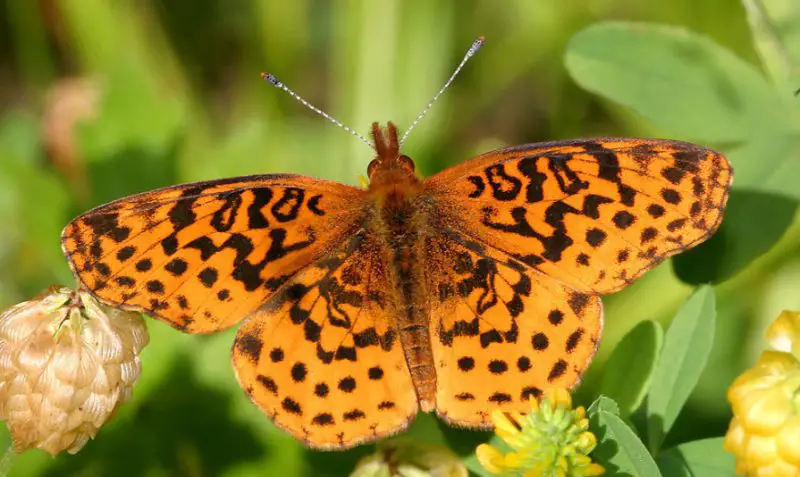
The Meadow Fritillary is a medium-sized butterfly with a wingspan of about 1.5 to 2.25 inches. Its wings are bright orange with dark brown or black spots and scalloped edges. The undersides are mottled with various shades of brown and orange, providing camouflage when the butterfly is at rest among grasses and leaves. This species is more delicate in appearance than other fritillaries but is noted for its bright and cheery coloration.
Meadow Fritillaries prefer open, grassy habitats such as meadows, marsh edges, and roadsides. Their caterpillars feed primarily on violets, similar to other fritillary species, making the availability of these plants essential for their life cycle. Adults feed on nectar from flowers including goldenrod, milkweed, and various asters. They exhibit a fluttering flight and tend to stay close to the ground, making them somewhat elusive but rewarding to spot.
In New York, Meadow Fritillaries are most common in the northern and western parts of the state but can be found in suitable habitats statewide. They are usually active from late spring through midsummer. Habitat conservation and maintenance of native plant species, especially violets, are important for sustaining their populations. Their delicate beauty and habitat preferences make them a treasured species for butterfly enthusiasts in the region.
Karner Blue (Plebejus samuelis) – Endangered

The Karner Blue is a small and delicate butterfly with a wingspan of approximately 1 to 1.5 inches. Males display brilliant sky-blue upper wings with narrow black borders, while females are more subdued with brown wings and some blue near the body. Both sexes have a pattern of small orange crescents and black spots on the undersides of their hindwings, which are important for identification. This species is especially notable due to its endangered status and restricted range.
Karner Blues have a unique ecological relationship with wild lupine (Lupinus perennis), which is the sole host plant for their larvae. The caterpillars feed exclusively on the leaves of wild lupine, making the availability of this plant critical to their survival. Adults feed on nectar from a variety of wildflowers, including butterfly weed, blazing star, and milkweed. They are weak fliers and tend to stay close to lupine patches within their sandy pine barrens and oak savanna habitats.
In New York, the Karner Blue is found primarily in limited areas of the Albany Pine Bush and other sandy habitats. Due to habitat loss and fragmentation, its populations have declined dramatically, leading to its listing as an endangered species. Conservation efforts focus on restoring wild lupine populations and managing pine barrens to protect and expand Karner Blue habitats. It remains a high priority for butterfly conservationists in the state due to its rarity and ecological significance.
Little Wood-Satyr (Megisto cymela)

The Little Wood-Satyr is a small, subtle butterfly with a wingspan of about 1.25 to 1.75 inches. Its wings are light brown with several distinctive eye spots surrounded by lighter rings on both the forewings and hindwings. The undersides are similarly colored, aiding camouflage among leaf litter and forest floor debris. Its rounded wing shape and gentle coloration make it blend well into shady woodland habitats.
This species prefers shaded, deciduous woodlands, forest edges, and damp, grassy areas. Adults are most often seen fluttering weakly near the ground along shady trails or low vegetation. They feed primarily on nectar from a variety of low-growing plants, including dogbane and milkweed, but also consume sap and rotting fruit. The larvae feed on various grasses, which are plentiful in their woodland environments.
In New York, the Little Wood-Satyr is common throughout forested regions, appearing from late spring through early fall. Its preference for shady and moist environments makes it less visible than many other butterflies but no less important ecologically. Conservation of forest understory habitats supports this species’ populations statewide.
Eyed Brown (Lethe eurydice)
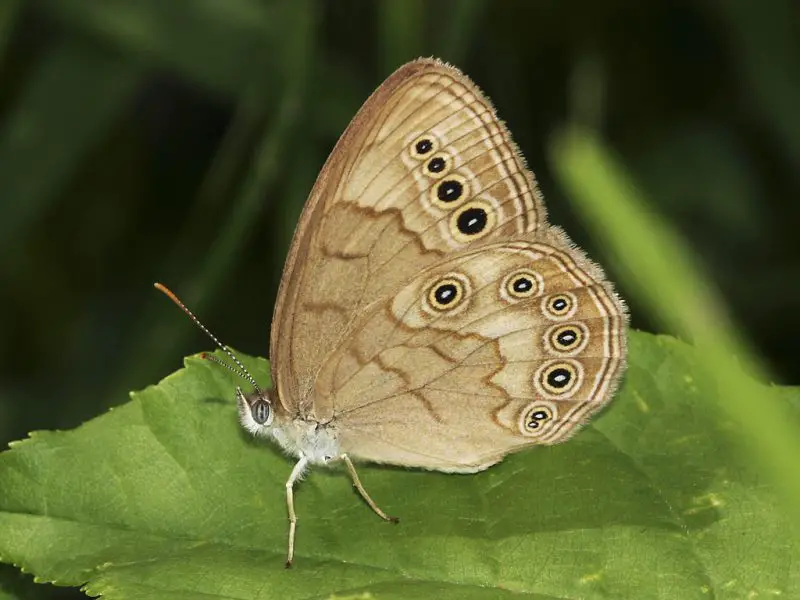
The Eyed Brown is a medium-sized butterfly with a wingspan of roughly 1.75 to 2.5 inches. Its wings are primarily brown, adorned with multiple dark eye spots ringed in pale yellow, especially prominent on the hindwings. The underside is mottled brown with similar eye spots, providing excellent camouflage against dead leaves and tree bark. The jagged wing edges add to its cryptic appearance.
Eyed Browns favor moist, wooded habitats such as swamp forests, marsh edges, and wet meadows. Adults exhibit slow, low flight near the ground, often resting on grasses and sedges. Their caterpillars feed on various species of sedge and grass, which thrive in these damp environments. Adults feed mainly on nectar from flowers, tree sap, and decaying organic matter.
In New York, the Eyed Brown is mostly found in the western and northern parts of the state, where suitable wet woodland habitats exist. They are active from late spring through summer and tend to be localized in their distribution. Protecting wetland habitats is crucial for the survival of this species.
Baltimore Checkerspot (Euphydryas phaeton)

The Baltimore Checkerspot is a striking medium-sized butterfly with a wingspan of about 2.25 to 3 inches. It has a distinctive black-and-white checkered pattern across its wings, interspersed with bright orange spots, which makes it unmistakable. The undersides mirror the upper pattern but in muted tones, allowing the butterfly to blend into its surroundings when resting.
This species is closely associated with wet meadows and marshes, where its larval host plant, white turtlehead (Chelone glabra), grows. The caterpillars feed exclusively on this plant and overwinter in communal silk nests. Adults feed on nectar from various flowers such as milkweed, dogbane, and goldenrod. Their flight is slow and deliberate, often low to the ground.
In New York, Baltimore Checkerspots are primarily found in the Hudson Valley and other wetland-rich regions during the summer months. They are considered a species of conservation interest due to habitat loss but can still be observed in protected wetland preserves. Efforts to maintain turtlehead populations are vital for their continued survival.
Hobomok Skipper (Poanes hobomok)

The Hobomok Skipper is a small butterfly with a wingspan of about 1 to 1.5 inches. Males are dark brown with a bright orange patch on each forewing, while females tend to be lighter brown with more extensive orange markings. Both sexes have a characteristic hooked tip on the forewing, typical of many skippers, which aids in quick, darting flight.
This skipper inhabits open woodlands, forest edges, and meadows where grasses grow abundantly. Larvae feed on various species of grass, making grassy openings essential for their development. Adults favor nectar from flowers like milkweed, clover, and thistle and are known for their rapid, erratic flight patterns close to the ground.
In New York, Hobomok Skippers are found statewide in appropriate habitats and are active from late spring through early summer. While not as abundant as some other skipper species, they play an important role in pollination and serve as indicators of healthy grassland ecosystems.
Peck’s Skipper (Polites peckius)
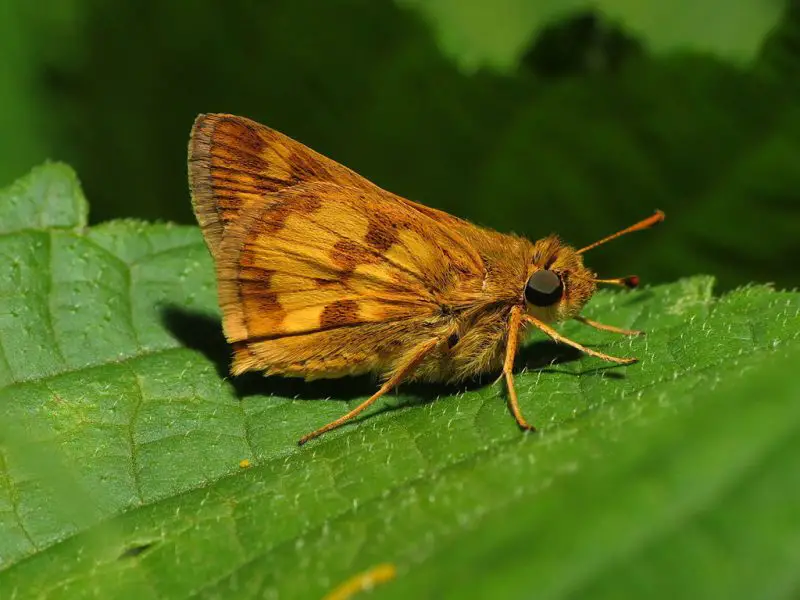
Peck’s Skipper is a small, robust butterfly with a wingspan of about 1 to 1.25 inches. Its wings are a warm brown with subtle orange patches and small dark spots, especially on the forewings. Males often show a faint stigma (a scent scale patch) on the forewing. The undersides are lighter brown, aiding in camouflage against dried grasses and soil.
This species prefers open grassy areas, fields, and meadows, where the larvae feed primarily on various native grasses. Adults feed on nectar from flowers such as clover, milkweed, and aster. Peck’s Skippers are known for their quick, low flights, often staying close to the ground and darting between flowers and grasses.
In New York, Peck’s Skippers are fairly common in suitable habitats throughout the warmer months, from late spring to early fall. Their presence indicates healthy grassland and meadow ecosystems, and they are a favorite target for butterfly watchers due to their distinct flight behavior and warm coloration.
Tawny Emperor (Asterocampa clyton)
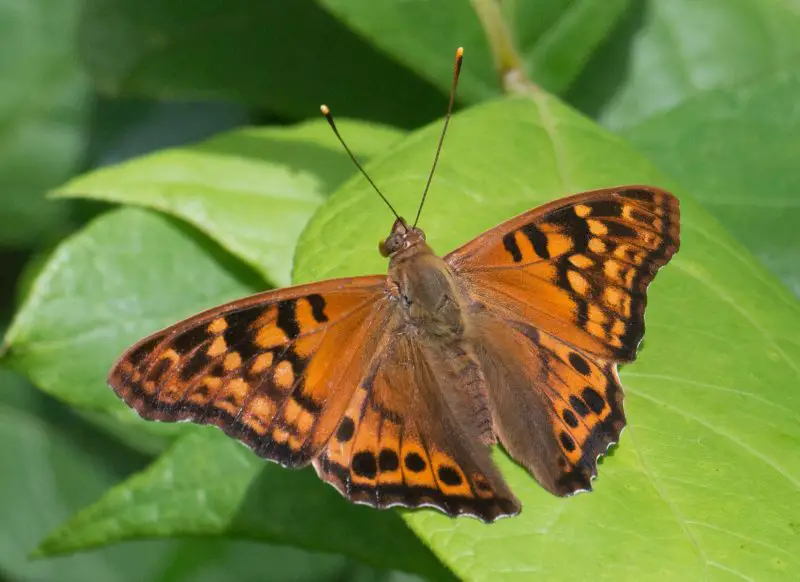
The Tawny Emperor is a medium-sized butterfly with a wingspan of approximately 2.25 to 3 inches. Its wings are predominantly tawny or orange-brown with subtle darker markings and eye spots, giving it a cryptic look when resting on tree bark. The underside is mottled brown and tan, perfect for camouflage in wooded environments.
Unlike many butterflies, the Tawny Emperor seldom visits flowers. Instead, adults prefer tree sap, rotting fruit, dung, and carrion as food sources. The caterpillars feed mainly on hackberry trees (Celtis species). They are strong fliers and often found flying swiftly through woodlands and suburban parks.
In New York, Tawny Emperors are most common in southern and central regions where hackberry trees are present. They are typically active from late spring through summer. Their cryptic coloration and non-floral feeding habits make them less conspicuous, but they are an important part of forest butterfly communities.
Hackberry Emperor (Asterocampa celtis)
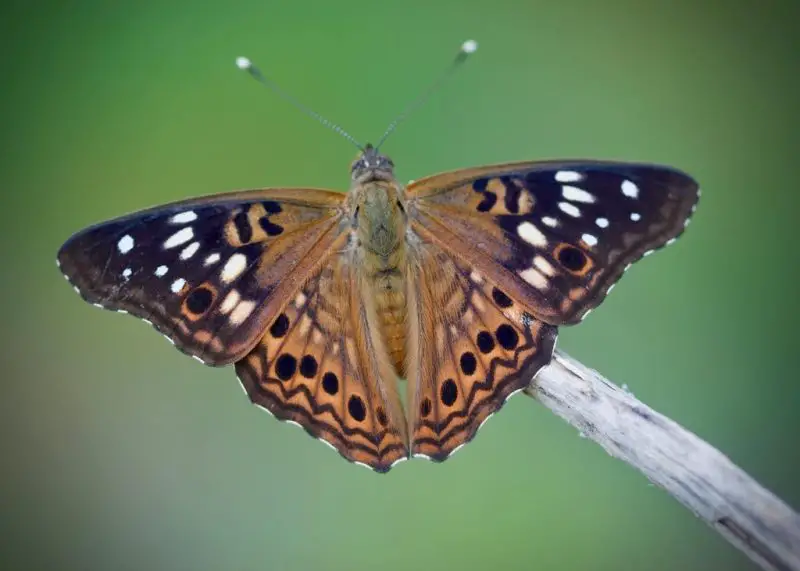
The Hackberry Emperor is similar in size and appearance to the Tawny Emperor, with a wingspan of about 2.25 to 3 inches. Its wings are brown with orange and white markings and several eye spots on the hindwings. The ventral side is mottled brown and tan, offering excellent camouflage against tree bark and dead leaves.
This butterfly is closely tied to hackberry trees, on which its larvae feed exclusively. Adults rarely visit flowers and instead feed on tree sap, decaying fruit, and animal droppings. Hackberry Emperors are known for their rapid, erratic flight and often perch on tree trunks or low branches.
In New York, Hackberry Emperors are found mainly in southern areas where hackberry trees grow naturally. They are most active in the summer months and prefer woodland edges, parks, and suburban areas. Their specialized host plant relationship makes them an interesting subject of study for butterfly conservation.

